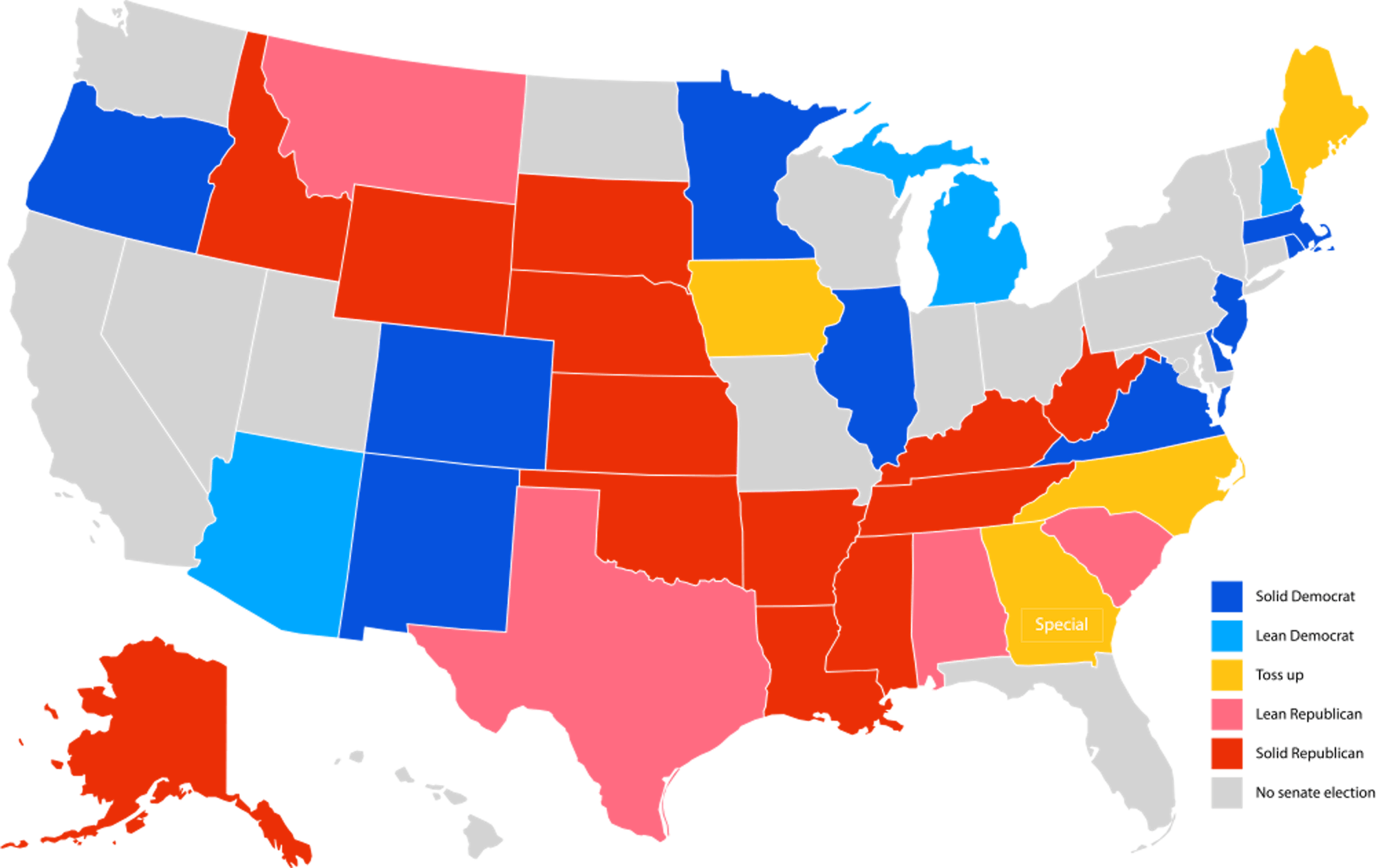SouthCarolina
Polls show a tightening race between Republican incumbent Lindsey Graham and Democratic challenger Jaime Harrison, drawing Democrats’ attention to the state with hopes of ousting the anti-Trump-turned-Trump-loyalist Graham from office. Graham hopes his success in leading the Senate Judiciary Committee’s confirmation of Amy Coney Barret to the Supreme Court will boost his support, despite his low favorability ratings. As of mid-October, Harrison has outraised Graham by more than$30 million, raising more than $100 million in total and making the racethe most expensive in U.S. history.Despite Harrison’s high favorability ratings, Harrison faces the challenge of overcoming the state’s decidedly conservative tilt and is relying on high turnout to sweep him into office.
Montana
Do not discount the libertarian ethos that makes up Montana politics. Popular Democratic Governor and failed presidential candidate Steve Bullock is challenging Republican incumbent Steve Daines, who was first elected in 2014. Democrat Jon Tester occupies the state’s other Senate seat, and Democrat John Walsh held Daines’ seat prior to Daines’ election, showing Montana’s bona fides as a purple state in terms of statewide legislative elections. Bullock, however, will have to overcome several hurdles to secure the seat for Democrats. Polls show Daines with a two-point advantage, well within the margin of error, but with Trump leading the ticket, the likelihood of split ticket voting is slim.
Iowa
Republican incumbent Joni Ernst is only slightly ahead in the polls, making it one of the nation’s closest races. Despite a lack of experience in elective office, Democratic challenger Theresa Greenfield has made the Iowa Senate race the most critical for Democrats in their fight for a majority in the U.S. Senate. With $47 million on the books, Greenfield has outraised her opponent bymore than double as of mid-October, though recent polls have found Ernst with a widening advantage. In recent ads, Ernst has tied herself to Trump, adopting attacks on China and the Affordable Care Act. Ernst knows her victory relies on high turnout from Trump’s base. While nearly 90% of likely voters have their minds made up, victory for Greenfield lies in the hands of late deciders and independents, whose support has fluctuated over the past few months.
Maine
Democratic challenger Sara Gideon is leading Republican incumbent Susan Collins in the polls, making it Collins’ toughest Senate election since she first secured office in 1997. Gideon, speaker of the state’s House of Representatives, hasoutraised her opponent in an effort to oust New England’s only GOP senator. This seat is critical to the Democrats' chances of gaining control of the Senate.
Georgia special election
More than 20 candidates are vying for the seat vacated by former Sen. Johnny Isakson, who retired in 2019. However, only three candidates are competitive: one Democrat and two Republicans. In this “jungle primary” of sorts, the two Republican candidates — incumbent Sen. Kelly Loeffler and Rep. Doug Collins — have split the state’s Republican electorate, allowing Democrat Rev. Raphael Warnock to lead with more than 30% of the vote. Both Republican candidates have tried to outflank one another to the right. If no candidate receives more than 50% of the vote, the top two finishers will face off in a January runoff election.
Georgia
Democratic challenger Jon Ossoff gained national attention in 2017 for an expensive and heavily contested special election for Georgia’s 6th Congressional District, losing the race by just three points. In an unusually close election for a statewide race, Republican incumbent David Perdue has a slight edge in the polls, though Ossoff leads handily in terms of fundraising with almost $11 million more than Perdue. Victory for either candidate is likely to depend on turnout in Atlanta and the Atlanta suburbs, and a win will only be declared if either candidate surpasses 50%.
NorthCarolina
Perhaps the most topsy-turvy Senate election this cycle, Republican incumbent Thom Tillis is in a dire straits, facing an uphill battle to fend off Democratic challenger Cal Cunningham. In early October, both campaigns were shaken up with unanticipated news: Tillis had contracted the coronavirus at Amy Coney Barrett’s Supreme Court nomination ceremony, and Cunningham’s extramarital affair from this summer came to light after text messages leaked. Despite these developments, the race remains in Cunningham’s favor, with recent polls indicating a three-point advantage. Though the state has a Republican tilt, it has a history as a purple state. In 2014, Tillis ousted Democratic incumbent Kay Hagan by less than 1.7 points. The state voted for Obama in 2008, though it voted for Romney in 2012. This election is viewed as a one that will likely deliver Democrats a 51-seat majority.
Arizona
After losing the 2016 election to fill GOP Sen. Jeff Flake’s seat, Republican incumbent Martha McSally was appointed to fill late Sen. John McCain’s seat. Now in a special election to see who will finish out McCain’s term, Democrat Mark Kelly, a former astronaut and navy pilot, has held a consistent lead in state polls and has outraised his opponent by more than $30 million.
Colorado
Former Democratic Gov. John Hickenlooper is leading Republican incumbent Cory Gardner in a race Democrats have been eyeing since 2016. Gardner, an unpopular senator with a 48% disapproval rating, has trailed Hickenlooper in fundraising by more than $13 million this cycle.






